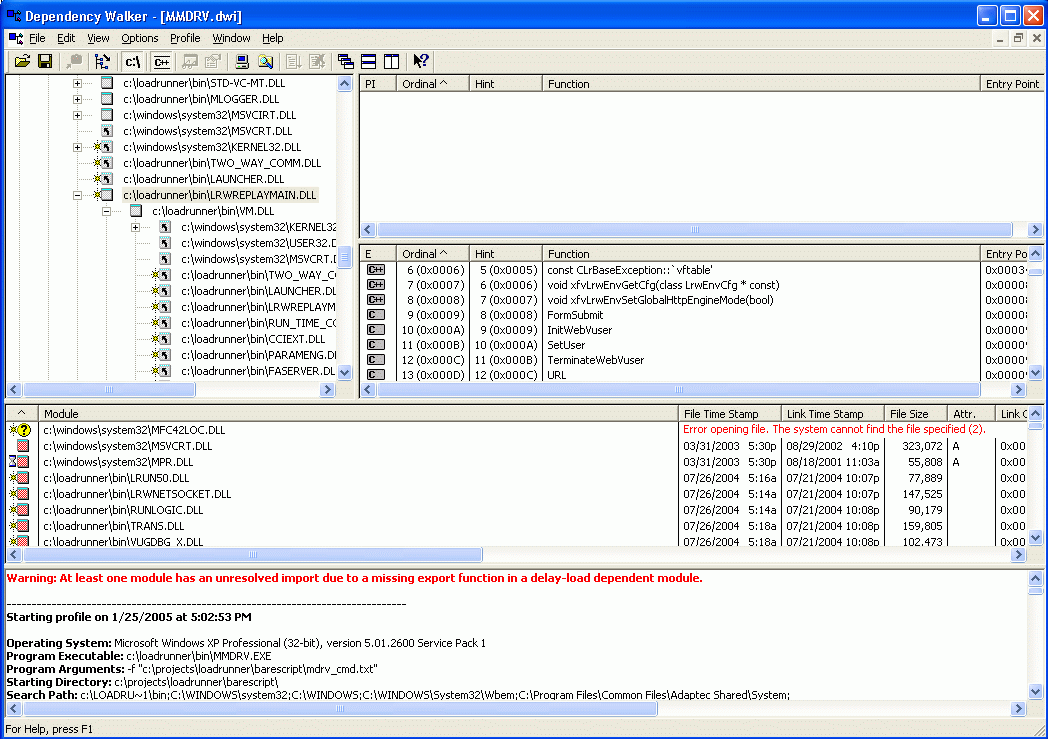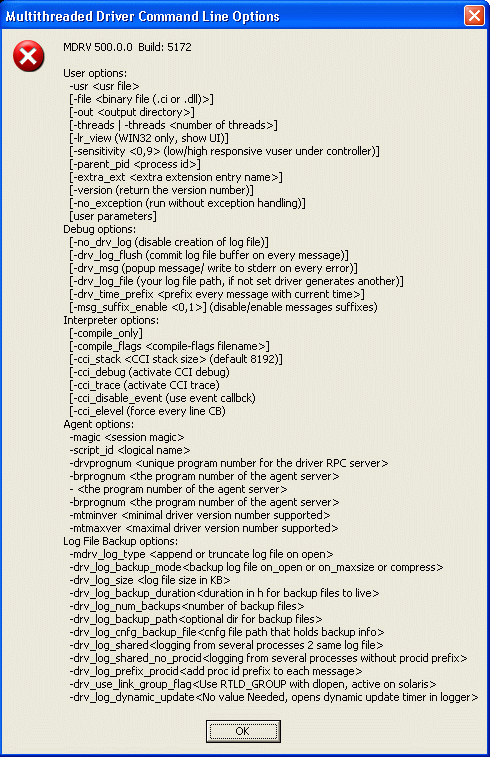Under The Hood: The LoadRunner Compiler
Posted on Mar, 2005 by Admin
Note: This article was originally posted on Loadtester.com by Suresh Nageswaran, and has been migrated to the Northway web site to maintain the content online.
Compilers and interpreters have always interested me. When I started tinkering with LoadRunner’s implementation, the initial motivation was simply to try an get an understanding of the engine under the hood. The idea was to acquire an edge by going from the documented to the undocumented. This approach bears rich dividends with avenues to extending the tool and using innovative debugging options being thrown open to the seeker.
So what’s inside the bonnet ?
It quickly becomes clear that the LoadRunner compiler is a native ANSI C implementation. This can be easily verified by looking at \bin\lcc.txt and \bin\gcpp.txt.
Mercury Interactive simply took two disparate opensource tools and stuck them together and created an interpreter interface as a front end. The tools I’m talking about are:
The tools I used to acquire this re-engineered understanding were rather simple: Dependency Walker (for looking at exports and function signatures) and TextPad(for parsing reg-exps on Win32 platforms).
Dependency Walker 2.0 comes with a rather nifty feature called Application Profiling. This is a technique used to watch a running application to see what modules it loads. Dynamically loaded modules that are not necessarily reported in any on the import tables of other modules can be detected this way.
 Figure 1: Dependency Walker Application Profiler
Figure 1: Dependency Walker Application Profiler
We start from our friend MDRV.exe (Multi-threaded Driver Process) who sits smugly in the bin folder. This process does a whole bunch of things including:
- Invoking the compiler to compile LR code
- Invoking the interpreter (effectively acting a runtime)
- Actually running on a generator host
- Debugging
The figure below shows what MDRV throws up as options when invoked at the command line.
Figure 2: mdrv.exe
To understand MDRV from a runtime perspective is to compare it to the Win32 and Java platforms. Here’s a simple comparison.
| Win32 World | ||
|---|---|---|
| Input | Process | Output |
| .c | Compiler | .obj |
| .obj / .lib | Linker | .exe |
| .exe / .dll | Runtime [Explorer] | Parsed into machine opcode |
| Java World | ||
|---|---|---|
| Input | Process | Output |
| .java | Javac Compiler | .class |
| No Linker | ||
| .class | Runtime [JVM] | Coverted into machine opcode |
| LoadRunner World | ||
|---|---|---|
| Input | Process | Output |
| .c | GNU CPP | combined_XX.c; pre_cci.c |
| combined_XX.c; pre_cci.c |
LCC CCI | .ci Compiled Image |
| .usr + .ci | Runtime [MDRV] | Converted into machine opcode |
So now that we have a little more insight into the compilation process, let’s walk through the process step by step.
We start with a barebones script – one having exactly one action with maybe an lr_output_message() and invoke MDRV on it for only the compilation part. Initially the script has only the following files:
vuser_init.c, Action.c, vuser_end.c, default.cfg, default.usp, BareScript.usr.
The command-line arguments look like this:
mdrv.exe -usr BareScript.usr -compile_only
Application profiling on this automatically causes invocation of cpp.exe. The command-line options passed to CPP.EXE are captured by the App Profiler. Here’s what it looks like:
Program Executable: c:\loadrunner\bin\CPP.EXE
Program Arguments: -f”c:\projects\loadrunner\barescript\options.txt”
MDRV has created a couple of files prior to invoking the C PreProcessor. The first is combined_BareScript.c – which actually serves the purpose of being a header file.
Here’s what it has:
//combined_BareScript.c
#include “lrun.h”
#include “vuser_init.c”
#include “Action.c”
#include “vuser_end.c”
The other file created was pre_cci.c which is a concatenation of all our C source files and the lrun.h header file. The lrun.h header contains declarations to various LR API functions we use – particularly the lr_output_message() – and this external symbol can only be resolved if this is present.
The options passed to the pre-processor were defined by MDRV in options.txt. Here’s what that file contains:
-+
-DCCI
-D_IDA_XL
-DWINNT
-Ic:\projects\loadrunner\barescript
-Ic:\loadrunner\include
-ec:\projects\loadrunner\barescript\logfile.log
c:\projects\loadrunner\barescript\combined_barescript.c
c:\projects\loadrunner\barescript\pre_cci.c
The GNU preprocessor command line options are documented here.
The -D commands are defines. In effect, MDRV is defining CCI, _IDA_XL and WINNT. The WINNT define is presumably the target platform. The include directories seem to indicate the presence of an LR_UNIX definition. As an exercise, we could try that as an option to see if the output is a Unix-compatible image.
The -I commands are include directory search paths.
The -e command points to a file as an error log.
The last two parameters are the files actually being put through the preprocessor.
The output of this exercise is still the pre_cci.c file.
The next item that got invoked was CCI.exe. Here’s what DepWalk found as command-line parameters:
Program Executable: c:\loadrunner\bin\CCI.EXE
Program Arguments: -errout=”c:\projects\loadrunner\barescript\logfile.log” -c “c:\projects\loadrunner\barescript\pre_cci.c”
This is straightforward – the -errout is pointing to an error log. The -c is the target to compile – which happens to be our pre_cci.c file.
The output of this process is the BareScript.ci file – our final compiled image.
But we’re not done yet. We still have to figure out how to run this script. For that we simply go to the command line and invoke:
mdrv -usr BareScript.usr -file BareScript.ci
Now, open up the Task Manager and look at the list of processes. Sure enough, mdrv is now a running process and is executing our vuser script!
The controller engine, then, is simply one large ‘for’ loop, spitting out mdrv instances using the Windows CreateThread() API call. Of course, it is a huge oversimplification, but it kind of puts things into perspective. In the next article, we shall look at what a Controller run throws up.
Suresh Nageswaran is a senior performance analyst for the Independent Testing Practice at Kanbay Software(KBAY), an Illinois-based company specializing in business solutions for the financial industry.

